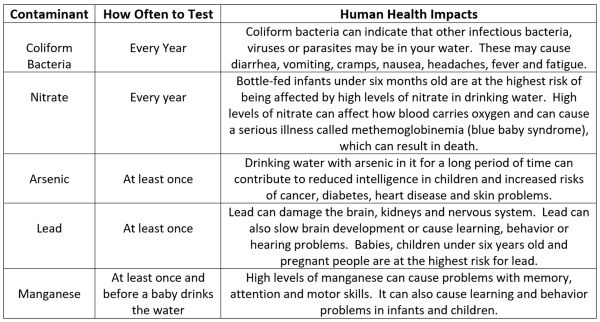
By Nikki Wheeler
Fillmore SWCD
Water Management
Coordinator
Southeast Minnesota landscape is unique. We have: karst topography, agricultural areas, bluffland area, and geologic layers that dictate the speed and direction of water moving from our surface through the soils and rock beneath.
What are the drinking water standards?
What can be done to ensure your drinking water meets safe standards?
What can I do if my well comes back contaminated?
What financial assistance is there, if any?
Private well owners are responsible for the safety of their own drinking water. They are not held to the National Primary Drinking Water Standards set by the federal government which apply to public water systems. These standards were developed to protect the public health by limiting contaminants in the water. The U.S. Environmental Protection Agency (EPA) standard for nitrate in drinking water is 10 mg/L. Drinking water with levels of nitrate at or below 10 mg/L meets contamination standards and is considered safe for consumption.
High nitrate levels in drinking water could pose harmful risk to specific groups of the population; especially to infants and pregnant people. Nitrate can occur naturally in surface water and groundwater without causing health problems. However, high nitrate levels in drinking water often result from improper well construction and location. Improper disposal of human and animal waste or the overuse of manure and chemical fertilizers can further increase nitrate levels. Sources of nitrate that can enter your well include: fertilizers; septic systems; animal feedlots; industrial waste; and, food processing waste. After flooding, wells could become more vulnerable to contamination, especially if the wells are shallow, poorly constructed, dug or bored, or submerged by floodwater for long periods.
Regular testing and following the safe drinking water standards is recommended so you, your family, and your pets have safe water to drink. Here are the recommended testing frequencies for five common contaminants in Minnesota’s well water.
What happens if your well comes back with high levels of a contaminant?
Financial assistance may be available to private well owners with demonstrated nitrate contamination problems. Funding can be potentially be used for such items as: well repair or reconstruction, well water treatment equipment and installation, or construction of a new well.
Questions about testing your private well water or current available financial assistance, please contact Nikki Wheeler at nikki.wheeler@fillmoreswcd.org or call the office at 507-887-0240.




Leave a Reply